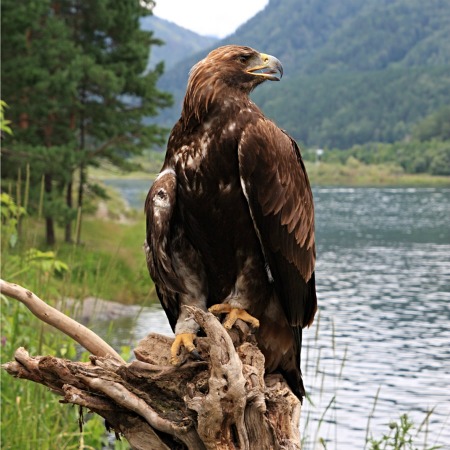 The U.S. wind industry has made an unprecedented and extraordinary commitment to develop projects that are compatible with the highest environmental standards. A key component of that commitment is the participation of many leading wind industry representatives on the Secretary of the Interior's Windpower Siting Guidelines Committee.
The U.S. wind industry has made an unprecedented and extraordinary commitment to develop projects that are compatible with the highest environmental standards. A key component of that commitment is the participation of many leading wind industry representatives on the Secretary of the Interior's Windpower Siting Guidelines Committee.
These guidelines, recently published by the U.S. Fish and Wildlife Service (FWS), provide the template for consistent, reasonable and scientifically justified analysis that facilitates environmentally compatible wind power projects.
Scientific data, which allow the wind community to better understand wind power/wildlife interactions, are steadily being acquired. A number of wind companies and environmental consultants are performing and allowing excellent and necessary research on – and analysis of – their projects.
For example, operational modifications to reduce bat mortality, bat deterrents, use of radar to detect incoming birds and bats, and post-construction surveys for mortalities have been very informative. A few years ago, there were only a few studies – now, there are scores. The results of these studies are quickly filling in knowledge gaps and are reducing the uncertainty of environmental-impact predictions.
Although the guidelines can promote a consistent approach to project-impact evaluation, each site must be considered based on local circumstances. Site studies should be narrowly focused on legitimate scientific uncertainty for environmental conditions and project configuration. In addition, iconic species such as the golden eagle need enhanced baseline population studies to establish the status and trends of the population range-wide. These large-scale studies are a shared responsibility.
The guidelines are fundamentally a template for risk assessment, to be used by both agency personnel and the developers of the project. The FWS can advise project developers, but the ultimate decision regarding an acceptable level of risk is up to the developers.
The primary incentive the FWS can offer is enforcement discretion. That is, if unexpected adverse impacts result from the project, and if the developer can demonstrate a written record of productive communication with the FWS during the project planning process, the developer can expect that the FWS will work with the company to alleviate the adverse impact, rather than commence an enforcement action under the Migratory Bird Treaty Act.
Service enforcement actions concerning bird mortalities due to transmission lines and oil and gas facilities are not unusual and have resulted in substantial fines; to date, there have been no FWS enforcement actions against a wind facility.
The primary elements for continuing the rapid progress the wind industry has made toward building wildlife-friendly projects include the following:
Get trained. Training in the use of the new guidelines for agency staff, as well as for wind company personnel and environmental consulting personnel, is essential. Insist on working with personnel who have received the training, and when an issue needs to be elevated for higher-level consideration, do not hesitate to do so. And communicate with the resource agencies early and often to gain enforcement discretion in the event that problems occur during the project's operation.
The key organizations that are facilitating the transfer and discussion of this developing scientific knowledge are the American Wind Wildlife Institute (AWWI), the National Wind Coordinating Collaborative (NWCC), and the Bats and Wind Energy Cooperative (BWEC). However, not all FWS or other agency staff participate in these forums.
Engage all levels. Engagement at all organizational levels between wind power companies and resource agencies is essential. Federal agencies, including the FWS, are generally highly decentralized, and responsibilities for project review are often fragmented within the organizations.
Companies deserve consistency across geographic and programmatic boundaries, which may necessitate that issues be elevated for higher-level coordination. Contrary to an often expressed opinion by developers, elevation of issues for regional- and/or national-level review should not be considered threatening by agency personnel.
For example, because the FWS is decentralized, some of its regional offices may differ in their approaches toward bat issues. Therefore, confusion and concern may arise.
Continue to invest. Continue to invest in focused research, studies and analysis (under the guidance of, and in cooperation with, the AWWI, BWEC, NWCC and resource agency personnel).
Demonstrate patience. Introducing agency staff to new scientific information will be an ongoing necessity for developers and consultants. Agency staff is spread thinly over many types of environmental issues and large geographic areas.
For example, a leading environmental consulting firm has recently published meta-analysis of bat mortalities at wind farms, which gives great insight into the conditions under which bat mortalities are most likely. This information is critical to wind farm design and operation and needs to be widely reviewed by resource agency personnel as soon as possible.
The current, temporary slowdown in wind development in the U.S. is a great opportunity to bring the greater scientific community together regarding the rapidly expanding state of knowledge regarding wind development/wildlife interactions. It is also a great time for enhanced engagement between wind company officials and agency staff at all levels.
David Stout is the former chief of habitat conservation for the U.S. Fish and Wildlife Service and was chairman of the Land-Based Wind Energy Siting Guidelines Committee. He is recently retired and is now located in the Seattle metro area. He can be reached at ecoservices360@gmail.com.



